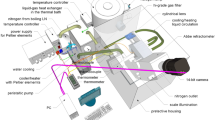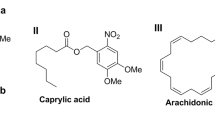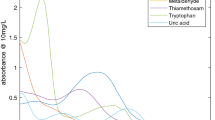Abstract
IN connexion with measurements on the photo chemical decomposition of acrolein we have measured (Hilger E 315 spectrograph) its ultra-violet absorption spectrum. There are two distinct regions of absorption, one consisting of bands with no overlapping continuum, extending from c. 4000 A. to 2800 A, ; the other of continuous absorption beginning at c. 2300 A. and extending towards higher frequencies. The first region becomes continuous at pressures above c. 60 mm. These results agree essentially with the earlier work of Lüthy1. The first region corresponds to absorption by the carbonyl group. Saturated ketones have also been found to give banded absorption below c. 2100 A., so that the second region found here might also involve absorption by the carbonyl group. On the other hand, some facts suggest that the continuous absorption is really to be attributed to a primary excitation of the C = C link. In consequence of the conjugated grouping this may be displaced towards the red as compared with that usually found.
This is a preview of subscription content, access via your institution
Access options
Subscribe to this journal
Receive 51 print issues and online access
$199.00 per year
only $3.90 per issue
Buy this article
- Purchase on Springer Link
- Instant access to full article PDF
Prices may be subject to local taxes which are calculated during checkout
Similar content being viewed by others
References
Z. phys. Chem., 107, 285; 1923.
NATURE, 133, 908, June 16, 1934.
Author information
Authors and Affiliations
Rights and permissions
About this article
Cite this article
THOMPSON, H., LINNETT, J. Spectrum of Acrolein. Nature 134, 937–938 (1934). https://doi.org/10.1038/134937c0
Issue Date:
DOI: https://doi.org/10.1038/134937c0
Comments
By submitting a comment you agree to abide by our Terms and Community Guidelines. If you find something abusive or that does not comply with our terms or guidelines please flag it as inappropriate.



